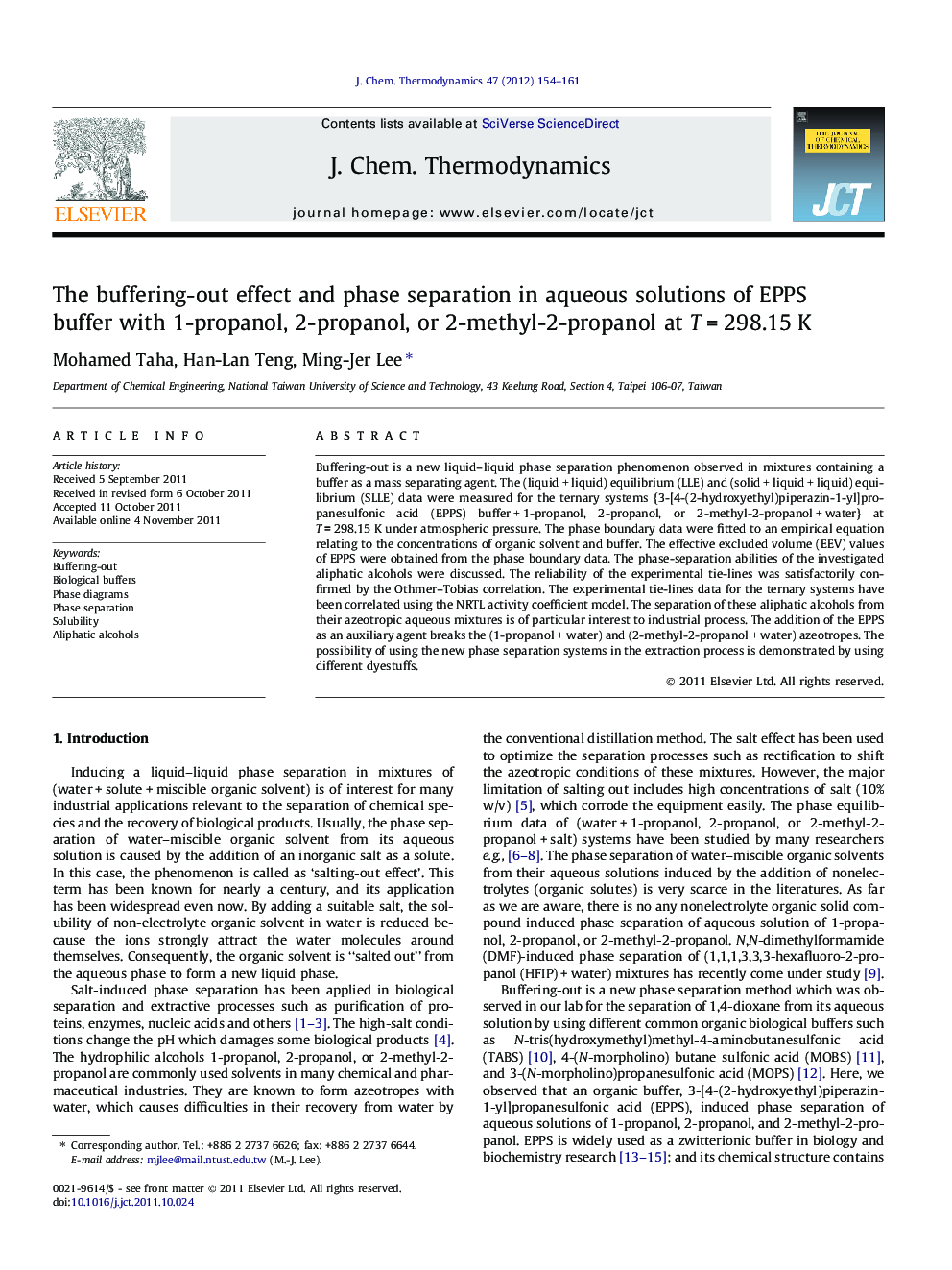| Article ID | Journal | Published Year | Pages | File Type |
|---|---|---|---|---|
| 216190 | The Journal of Chemical Thermodynamics | 2012 | 8 Pages |
Buffering-out is a new liquid–liquid phase separation phenomenon observed in mixtures containing a buffer as a mass separating agent. The (liquid + liquid) equilibrium (LLE) and (solid + liquid + liquid) equilibrium (SLLE) data were measured for the ternary systems {3-[4-(2-hydroxyethyl)piperazin-1-yl]propanesulfonic acid (EPPS) buffer + 1-propanol, 2-propanol, or 2-methyl-2-propanol + water} at T = 298.15 K under atmospheric pressure. The phase boundary data were fitted to an empirical equation relating to the concentrations of organic solvent and buffer. The effective excluded volume (EEV) values of EPPS were obtained from the phase boundary data. The phase-separation abilities of the investigated aliphatic alcohols were discussed. The reliability of the experimental tie-lines was satisfactorily confirmed by the Othmer–Tobias correlation. The experimental tie-lines data for the ternary systems have been correlated using the NRTL activity coefficient model. The separation of these aliphatic alcohols from their azeotropic aqueous mixtures is of particular interest to industrial process. The addition of the EPPS as an auxiliary agent breaks the (1-propanol + water) and (2-methyl-2-propanol + water) azeotropes. The possibility of using the new phase separation systems in the extraction process is demonstrated by using different dyestuffs.
Graphical abstractFigure optionsDownload full-size imageDownload as PowerPoint slideHighlights► Buffering-out is a new liquid–liquid phase separation containing biological buffer. ► EPPS buffer-induced phase separation of aqueous solutions of aliphatic alcohols. ► Phase diagrams of EPPS + water + 1-propanol/2-propanol/2-methyl-2-propanol are studied. ► EPPS breaks the 1-propanol + water and 2-methyl-2-propanol + water azeotropes. ► The (liquid + liquid) equilibria can be well correlated by the NRTL model.
